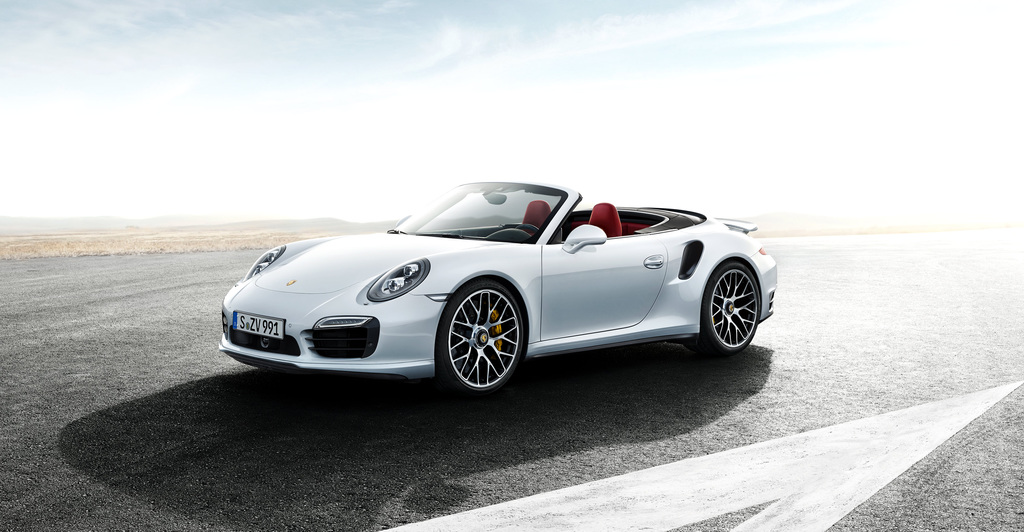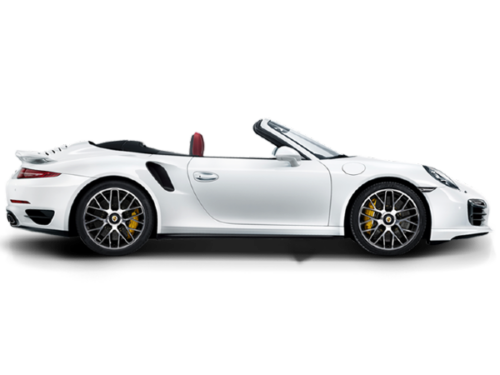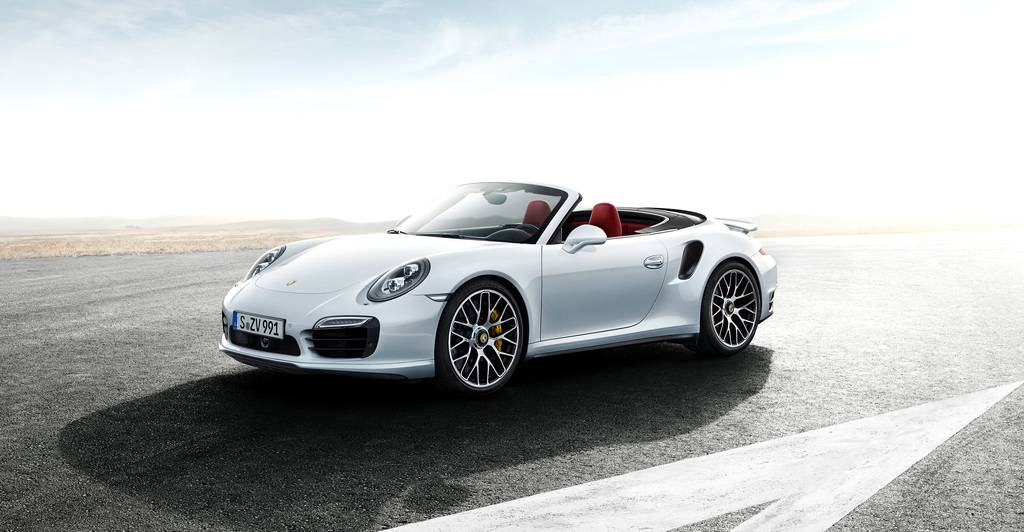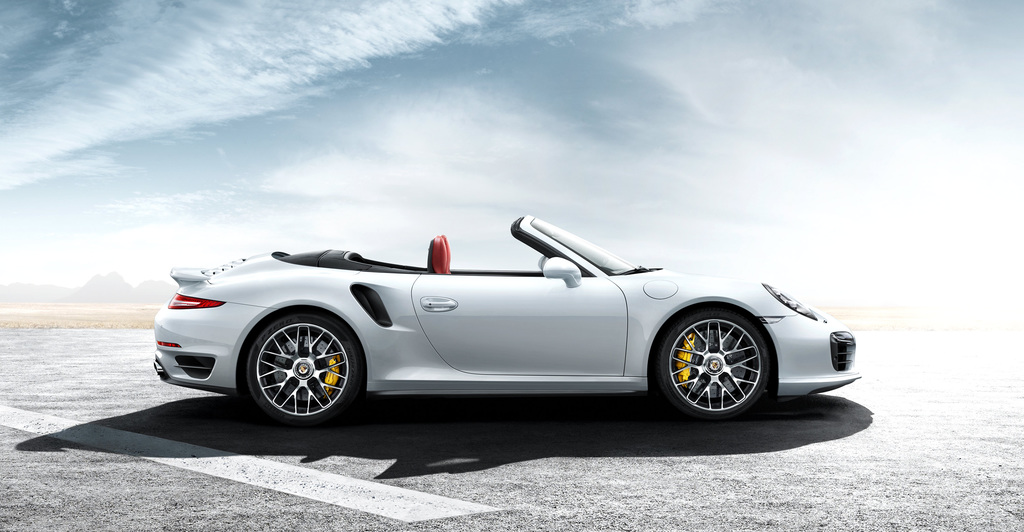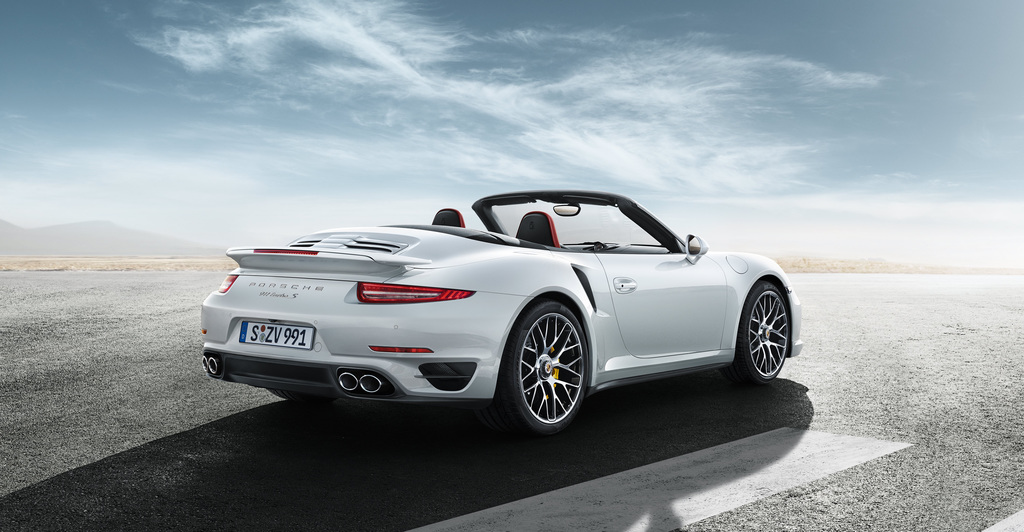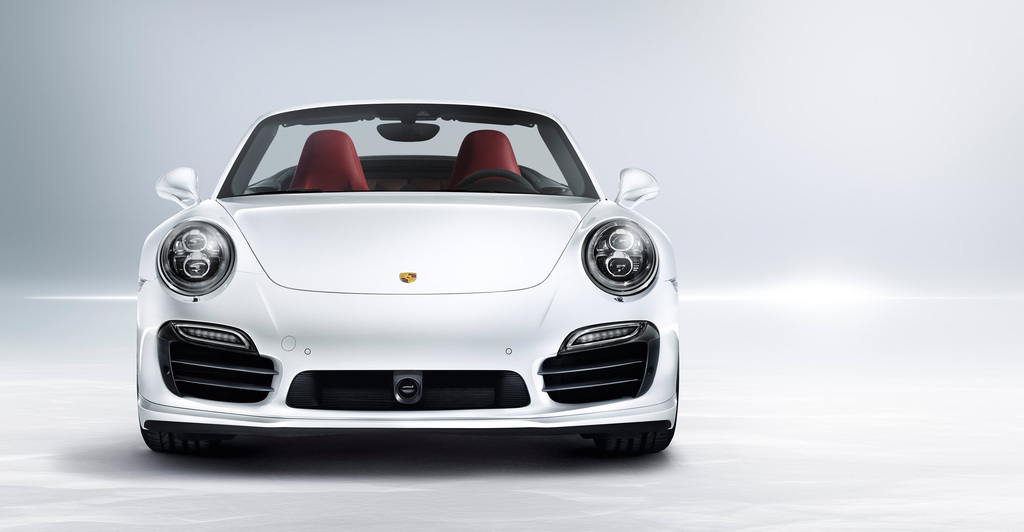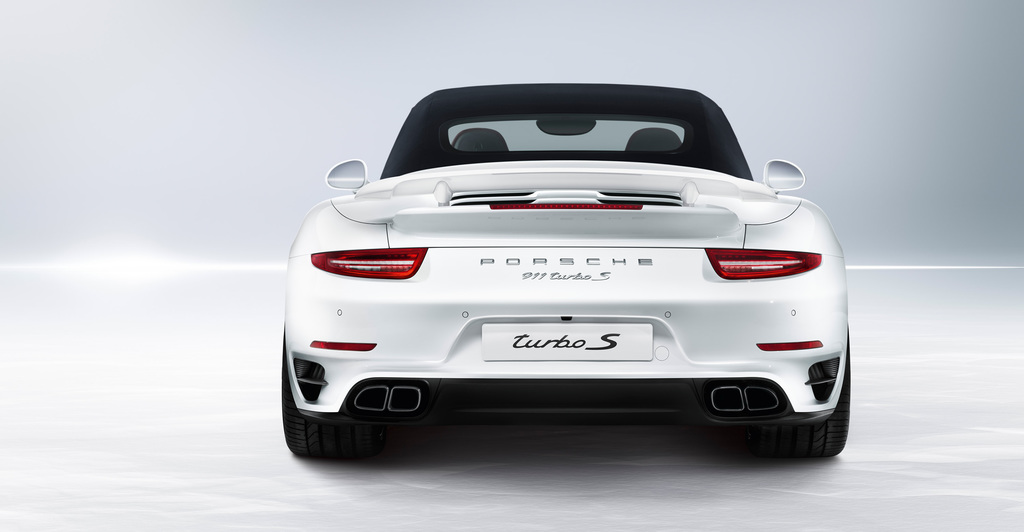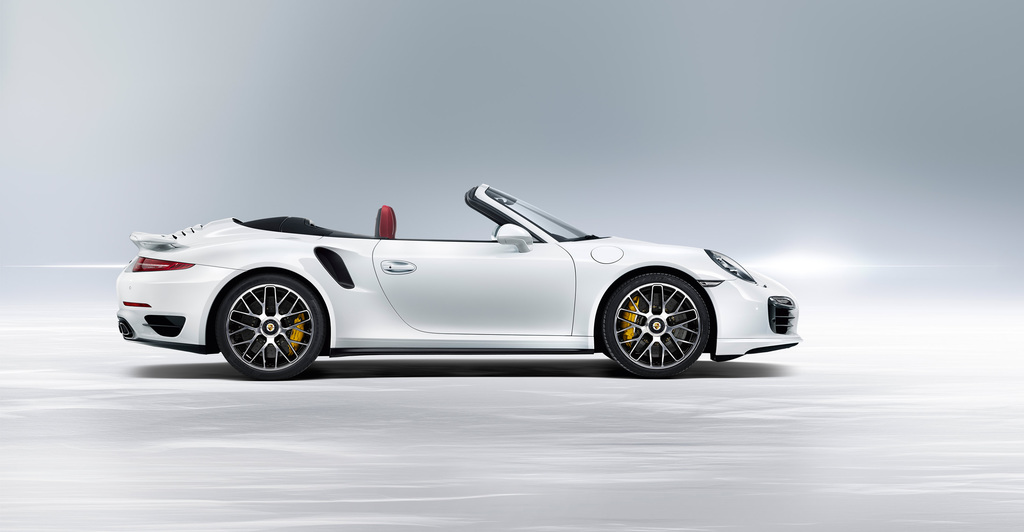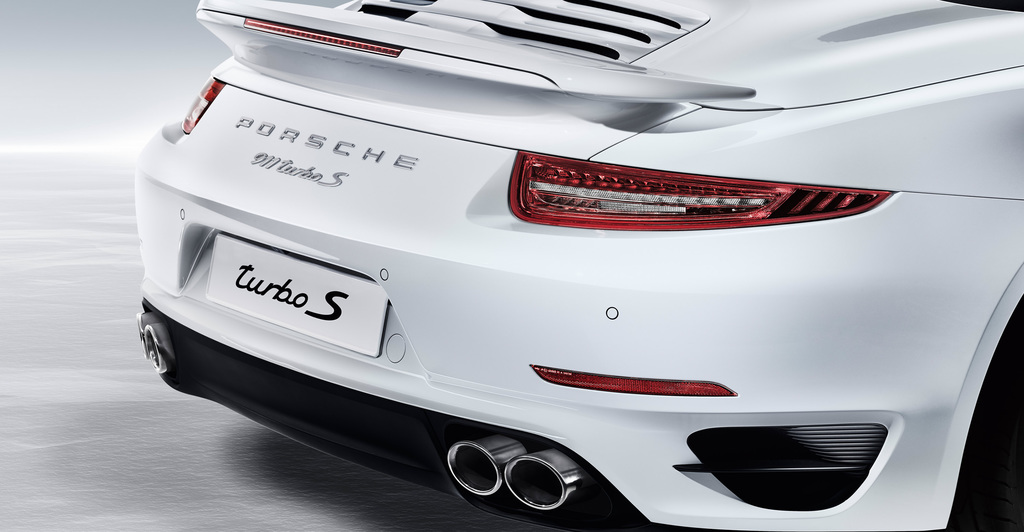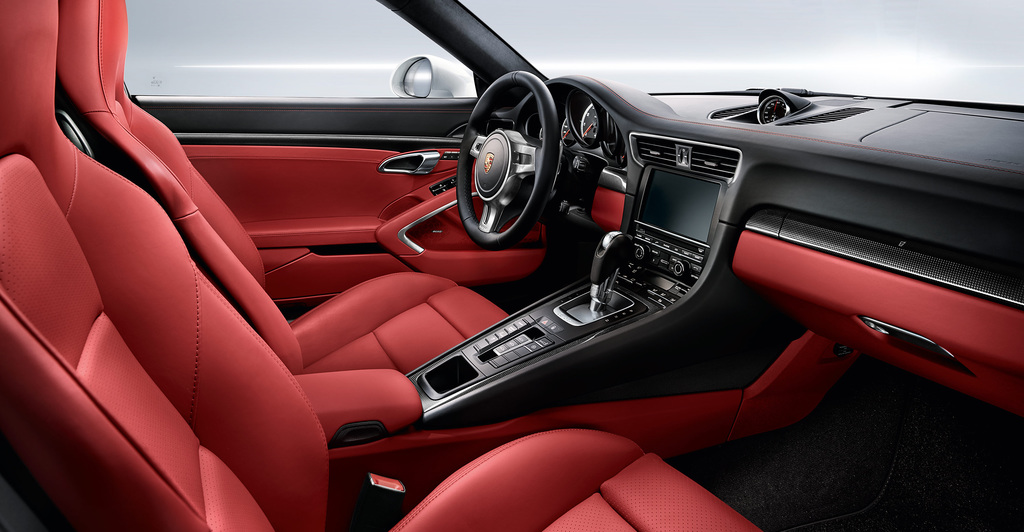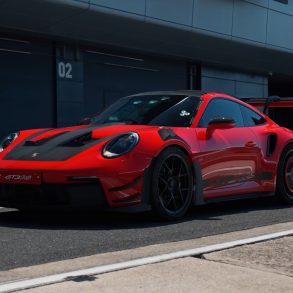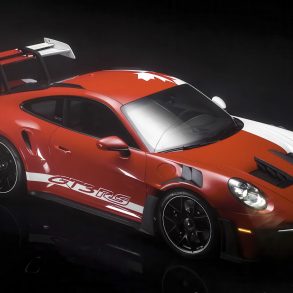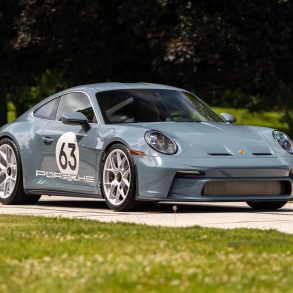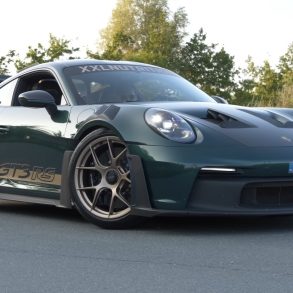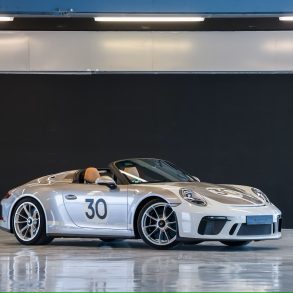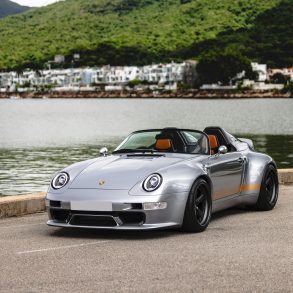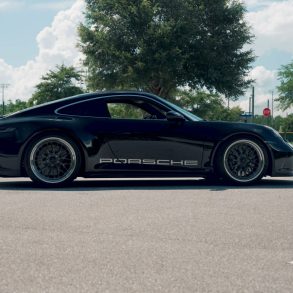(2014 – 2016) Porsche 911 Turbo S Cabriolet (991) – Ultimate Guide
Everything you need to know about the 991.1 Turbo S Cab comes from Car and Driver test results. “Launch control puts the computer in charge and sends the 3741-pound Turbo S Cab to the far side of 60 mph in just 2.8 seconds. A quarter-mile that nearly breaks into the 10s—11.1 seconds at 124 mph—attests to how serious this car gets when provoked. We saw 1.0 g on the skidpad and a stopping distance of 151 feet, both strong numbers abetted by the hilariously staggered Pirelli P Zeros (245/35 in front, 305/30 in back)”. This is in a comfortable, all-wheel drive, grand touring convertible.
The 2014 – 2016 911 Turbo S Cabriolet give you all the dynamic range of the 911 Turbo S coupe multiplied by the driving pleasure offered by an open-top sports car. Porsche launched the Turbo Cabriolet and Turbo S Cabriolet at the same time and they both follow the same formula. You won’t be disappointed in either choice but the Turbo S Cab does give you some extra goodness that is worth the premium price over the regular drop top.
The turbocharged 3.8-litre six-cylinder engine delivers 520 bhp the base 911 Turbo cab and 560 bhp in the S model. That means 0 – 60 mph is 0.1 seconds faster in the S, a barely believable 3.0 seconds flat. Besides the power, the package gets you standard carbon-ceramic brakes, Porsche Dynamic Chassis Control with Active Anti-Roll Control, Sport Chrono Package, two-tone black and red interior, 18 adaptive sports seats, center-lock mounted wheels that are half an inch wider in back, and some different grills on the front air intakes. If you were to option a standard Turbo with all those options, you would pay more than the base price of the S.
Boasting PDK dual-clutch transmission as standard and the new PTM all-wheel drive, as well as featuring rear-axle steering and active aerodynamics, the open-top 911 Turbo S is a better handler than previous generations. While the rear-axle steering has an immensely positive impact on handling for the two new super sportscars, both on the racetrack and during everyday use, the active aerodynamics can be tuned to offer optimum efficiency or driving dynamics at the touch of a button, depending on the driver’s wishes.
Car and Driver: Porsche is serious about giving the softtop Cabrio the interior isolation of a hardtop. The headliner is actually solid, being several pieces of some type of sound-deadening material upholstered with black cloth. During the 13 seconds it takes the motors to stow the top, these pieces all collapse and accordion as necessary. Top up, the cabin is downright quiet at freeway speeds save for a slight wind ruffle around the windows. Once the top is down, a motorized screen can be raised to block out the licking wind.
Pictures
Press Release
The dynamic range of the new 911 Turbo models multiplied by the driving pleasure offered by an open-top sports car: This is the succinct formula behind the two new leading 911 Cabriolet models. Some 50 years after the 911 first made its début and to coincide with the 40th anniversary of the 911 Turbo, the open-top versions of the 911 Turbo and 911 Turbo S are making their global début. The vehicles will be unveiled for the very first time at the 2013 Los Angeles Auto Show . By adding the two new leading 911 models into the mix, Porsche is doubling its offering of the top-of-the-range models to four versions.
In supplementing the range, the Porsche 911 Turbo Cabriolet and 911 Turbo S Cabriolet deliver the same blend of dynamism, performance and efficiency offered by the Coupé model unveiled a few months ago. Expressed in figures: The turbocharged 3.8-litre six-cylinder engine delivers 520 bhp (383 kW) in the open-top 911 Turbo and 560 bhp (412 kW) in the S model. The cars accelerate from zero to 100 km/h in 3.5 and 3.2 seconds respectively, reaching a top speed of up to 318 km/h. And all this while achieving fuel consumption figures below the ten-litre limit: Both of the new top-of-the-range Cabriolet models rest assured in the New European Driving Cycle (NEDC), boasting figures of 9.9 l/100 km (equivalent to 231 g/km CO2). When compared against the respective predecessor models, the new vehicles deliver 30 bhp more power and are 0.2 seconds faster in terms of their standard acceleration. They are also up to 15% more efficient.
Active rear-axle steering and active aerodynamics for even greater dynamism on the road
The driving dynamics offered by the two new top-of-the-range Cabriolet models is something that cannot be expressed in simple figures. Boasting PDK dual-clutch transmission as standard and the new PTM all-wheel drive, as well as featuring rear-axle steering and active aerodynamics, the open-top 911 Turbo models are now also establishing the leading Porsche technology in the open-top super sportscar segment. While the rear-axle steering has an immensely positive impact on handling for the two new super sportscars, both on the racetrack and during everyday use, the active aerodynamics can be tuned to offer optimum efficiency or driving dynamics at the touch of a button, depending on the driver’s wishes.
More than ever before, both of these new top-of-the-range models also make a clear visual statement about their performance. The characteristic, widely flared rear wings of the new 911 Turbo generation are 28 mm wider than those of the 911 Carrera 4 models – a virtually level surface of just over a hand’s width extends out from the C-pillar to the outer edge of the vehicle. The impressive effect of this width is accentuated still further when the top is down.
Another eye-catching feature of the 911 Turbo Cabriolet is the exclusive Porsche panel bow top with its lightweight magnesium frame. This innovative technology enables the Coupé-like arch to the roof to be achieved when the top is closed. This arch, which also offers advantages in terms of aerodynamics, is not feasible using conventional construction techniques. As with predecessor models, the roof opens and closes in around 13 seconds, at speeds of up to 50 km/h.
Premium furnishings in the interior
The interior of the new Cabriolet models follows that of the 911 Turbo Coupé. The S-model boasts a particularly extensive range of furnishings, with features including an exclusive interior in Black/Carrera Red and adaptive Sport Seat Plus seats with 18-way adjustment and memory. In addition, the backrest shells of the seats are leather trimmed with double cap seams, and various elements are achieved in a carbon look. As with the predecessor models, the Bose sound system is fitted as standard – and, for the first time, a Burmester system is also available on request. What’s more, the radar-controlled adaptive Cruise Control system, camera-based road sign and speed limit recognition function and reversing camera are also available as options.
The new top-of-the-range 911 Cabriolet models will be launched onto the market in December 2013. In Germany, the 911 Turbo Cabriolet costs EUR 174,431 and the new open-top 911 Turbo S EUR 207,989, inclusive of VAT and country-specific equipment in each case. In the United States, the 911 Turbo Cabriolet costs $160,700 and the new 911 Turbo S Cabriolet costs $193,900 plus destination charges of $950.


